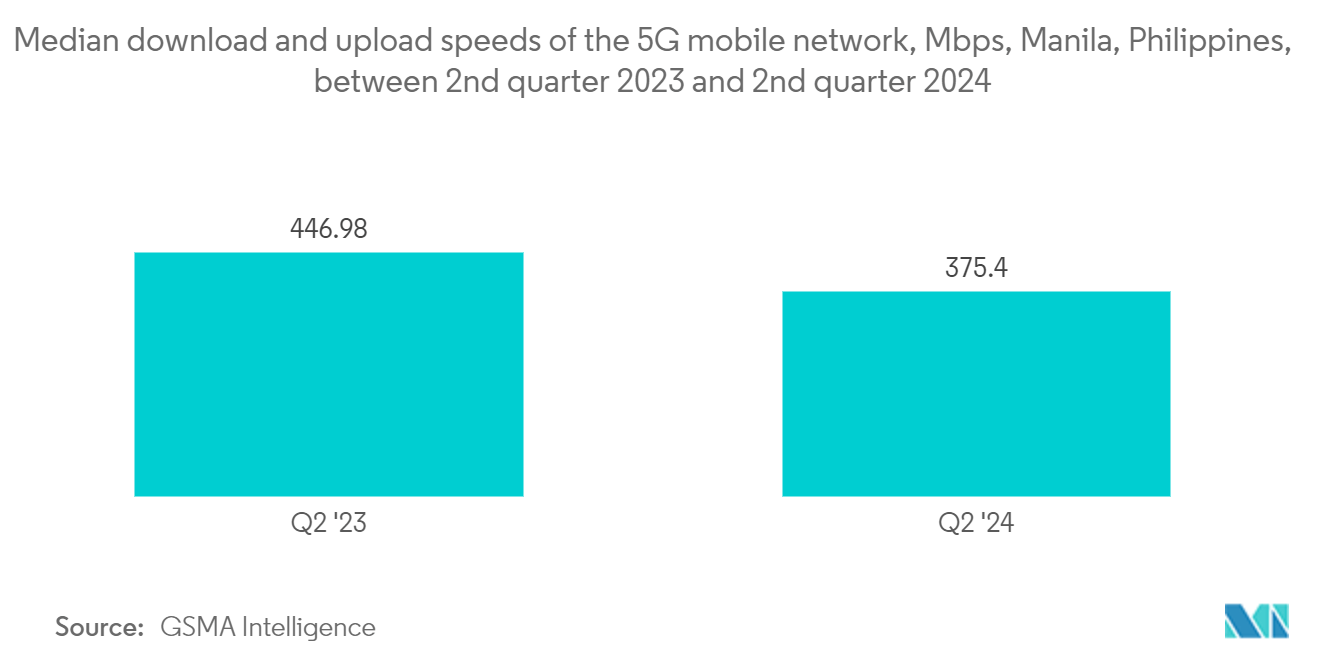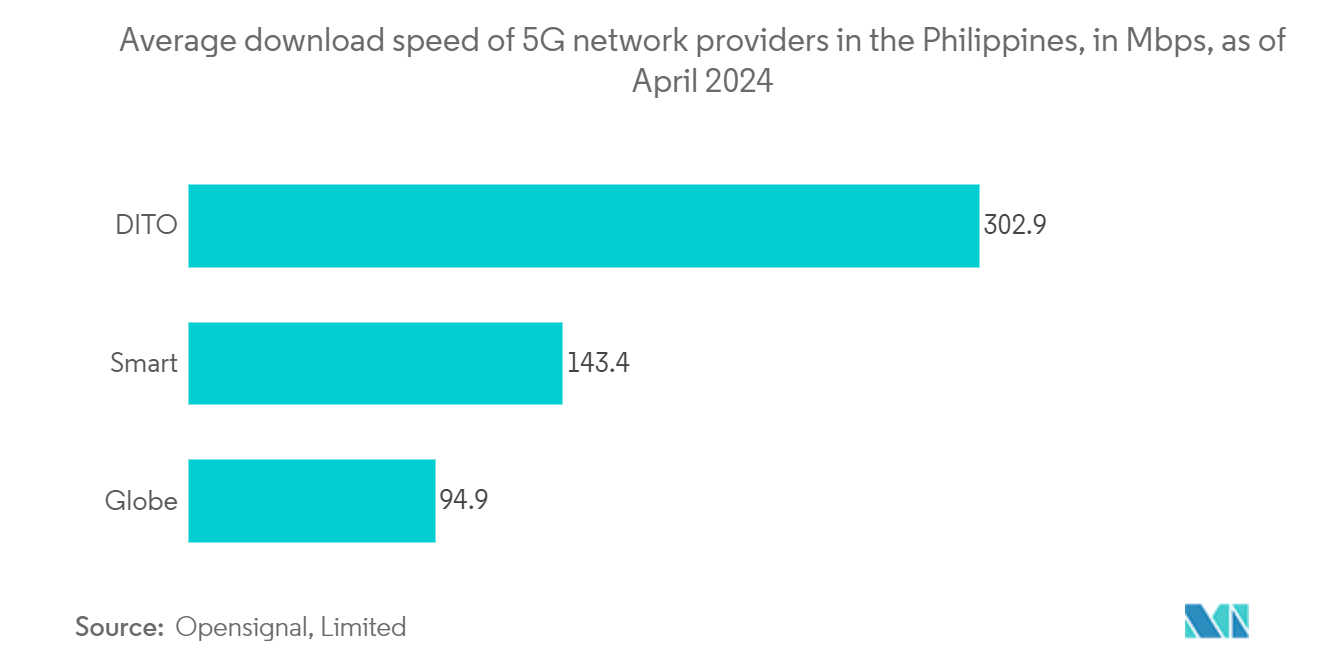Market Trends of Philippines Data Center Networking Industry
IT & Telecommunication is Anticipated to be fastest Growing Segment
- The ICT sector encompasses both the IT and telecommunications markets. Investments in IT are on the rise, and significant growth in ICT market demand is anticipated within the next five years. The International Trade Bureau projects Philippine software and software services revenue to reach USD 95 million by 2025.
- According to Oracle, the Philippines accounted for a 7.23% share in IT recruitment activity in August 2022, marking a 22.09% increase from July 2022. This uptrend signifies robust growth within the IT sector. Notably, in March 2022, Microsoft launched the Microsoft for Startups Founders Hub to bolster startup ambitions and drive innovation for economic and social progress across Asia and globally. Such initiatives from key players in the ICT market are poised to assist emerging IT companies in penetrating the Philippine ICT market and developing new hardware, software, and services.
- The telecommunications industry's growth is primarily attributed to population expansion and the widespread adoption of mobile phones supporting nationwide 3G, 4G, and 5G services. For instance, PLDT is accelerating its network modernization programs by transitioning from copper to fiber. Simultaneously, significant progress has been made in 5G development.
- DITO Telecommunity reports the deployment of over 30,000 km of fiber optic cables connecting the country's three main islands, along with the construction of more than 5,500 mobile phone base stations linking over 600 cities and towns. This broadband expansion is poised to drive growth in the Philippines' ICT market, offering new opportunities.
- The GSMA reports an average download speed of 163.51 Mbps on 5G mobile networks in the Philippines. With the country's adult population increasingly utilizing mobile internet, the demand for ICT products and services is expected to surge further due to population growth. Notably, PLDT has announced its readiness to deploy 5G services using Cisco's new converged Software-Defined Networking (SDN) transport infrastructure. Such investments in 5G services are anticipated to unlock fresh growth prospects in the Philippine ICT market.

Ethernet Switches Holds Largest Market Share
- Data center Ethernet switches are network devices designed for operation within a data center environment. They play a crucial role in enabling efficient and rapid data transfer facilitating interconnection between servers, storage devices, and other network equipment. These switches are tailored for high-speed data transmission, supporting gigabit and multigigabit Ethernet, including 10GbE, 25GbE, 40GbE, 100GbE, and beyond.
- The Philippines, like many other countries, has experienced a significant digital transformation across its industries. Businesses are investing in data centers to enhance the efficiency of processes, services, and operations. Ethernet switches are instrumental in ensuring the efficiency, reliability, and security of data center operations.
- The available range of industrial Ethernet switch products reflects vendors' continuous expansion beyond traditional 8-port DIN rail switches, catering to various application-specific services. Vertical integration and infrastructure applications prioritize maximum throughput and bandwidth, while in factory automation, efforts may focus on limiting network traffic.
- Smart Ethernet switches equipped with Power-over-Ethernet (PoE) technology serve security and monitoring purposes. PoE networks deliver power through local network cables to connected devices, which is particularly useful for Internet protocol-based monitoring systems, enabling accessible browser-based communication and user interface.
- Market leaders are concentrating on updating network devices to meet increasing market demands. For instance, in July 2023, Broadcom introduced a new software-programmable Trident 4-X7 Ethernet switch ASIC to address the growing need for 400G connectivity within enterprise data centers, catering to the escalating demand for higher bandwidth levels.


